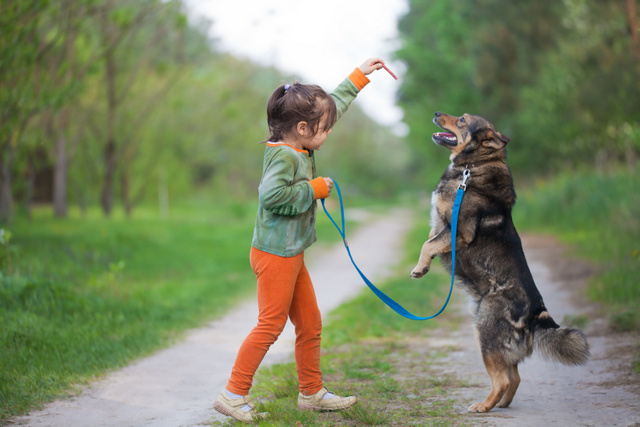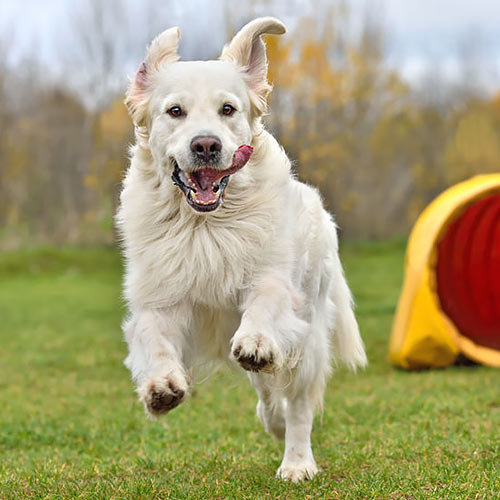When a dog is taken into the home as part of the family, it is only one half of that relationship. The other half if the human side. When a you take your four-legged friend to a dog trainer and he receives training, just one side of the partnership has been improved. There is also the other half of the equation…the human. While we at Conifer Canine strive to educate both ends of the leash, humans must understand that they have a present/future responsibility to maintain the training which their dog has received. This is why we spend sufficient time with the human when the training is complete: explaining, answering questions, handing out a packet of information, and showing the owner what the dog has learned. We’re sharing the information that is necessary to support the infrastructure instilled during training.

One of the things that is helpful to understand is that dogs are always learning. Also understand that the human is always teaching (or training), whether we realize it or not. Dogs are always picking up our cues. Was the tone in the voice serious or merely asking? Was the dog permitted to crawl forward during the Stay and get by with it? Is the doggie parent distracted? Too tired to enforce the command? And on and on the list could easily go.
The human side of dog training includes, but is not limited to,
Commands
Use the same commands which the dog has learned during training. Our clients receive a printed list of these commands so that everybody is “on the same page.” Using different commands than what she knows is literally speaking a foreign language. Verbal communication is the weakest form of communication to the dog. Yet it’s a human’s strongest form of communication. So, the dog has to learn to understand “human.” The least you can do is to use the verbiage the dog has learned from her trainer.
Use it or Lose It
Give the dog frequent opportunities to use what he has learned. If he only Heels once a month, the Heel exercise will get rusty and will probably disappear. If she is permitted to move from the Stay position without your permission, the Stay will quickly become undependable. Commit yourself to maintaining the training. Your dog – and your frustration level – will be grateful for it.
As a part of maintenance, a word to the wise is to continue keeping the dog motivated to please you. Some dog owners (and even some trainers) get the idea that once a dog is “trained” that he no longer needs rewards. Poppycock! Whether it’s treats, praise, a pat on the head, scratch behind the years, or chasing a fleeing tennis ball, reward the dog for doing well! This will be needful for the rest of his/her life. It keeps the dog inspired to follow your leadership.
Leadership
Provide leadership to the dog by understanding that he/she is not a robot/machine. Dogs need/crave leadership from their human. Wild dogs can operate fine without human intervention while they are in their own environment. But to place a dog in a human environment changes the needs of the dog. He is now in an unfamiliar setting. He now needs the rules to be explained to him. He still needs correction when those rules are broken – just like he would in a wild habitat.
When a dog does not understand the rules of living in a home, he will seek to find those boundaries, many times willing to receive our petty responses (such as getting whacked by a rolled up newspaper or getting the nose rubbed in a puddle of urine) just to discover what is acceptable. Once the rules are explained, enforce those rules with the civilized means discussed with your trainer. Failure to enforce the rules will produce a dog that is confused and frustrated. If one member of the family enforces the rules but another lets the dog get by, bewilderment will be the result. Unfortunately, many times dogs “act up” simply because they need some fair, firm leadership from their human partner/s.
Be Smart
Some dogs are smarter than their humans. These dogs know how to get you to let them do what they want to do. They learn how to “push your buttons.” They’re smart enough to get into trouble. You must stay one step ahead of a smart dog … or she’ll outsmart you!
While we’re discussing being smart, choose a dog that is compatible with who you are.
- Don’t get a high maintenance dog if you are unwilling to invest the extra time/money into the dog.
- Don’t get a high energy dog if you cannot provide her with the space and time to run off that energy. Putting this kind of dog into a crate for 8-12 hours a day will be a disaster!
- Don’t get a “couch potato” dog if you want to take him for hikes several times a week. You will become frustrated!
When you let a dog outside to potty, don’t let him back inside until he does his business outside, whether it takes 2 minutes or an hour. This can be difficult, especially with some smaller dogs that do not like to pee when the ground is wet/cold. But if you let the dog back inside before he/she is finished, you’ll be guaranteed to clean up a mess.
We have several articles on our website to help educate dog parents. There are topics from house-training to fear aggression or raising a working puppy to using a clicker and MUCH more. You see, our goal as a dog trainer is to educate both ends of the leash.

